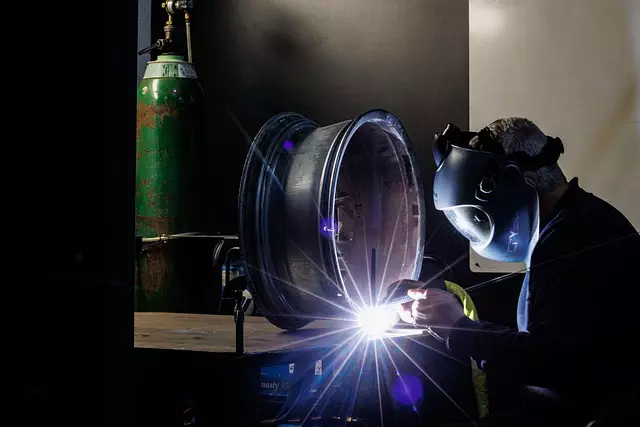Residential stem wall reinforcement is critical for maintaining structural integrity and longevity in buildings. Stem walls, supporting the connection between foundation and frame, can settle, crack, or become unstable due to factors like earthquakes, rainfall, or shifting soils. Reinforcement techniques such as steel braces, bolts, or mesh prevent further damage and mitigate risks associated with foundation movement. Proactive reinforcement ensures building safety and stability, safeguarding investments over time. Early identification of stem wall issues, accurate soil analysis, and choosing the right repair materials are key to successful residential foundation repair. Regular inspections by professionals help in long-term maintenance and prevention of stem wall reinforcement problems.
“Residential stem wall reinforcement is a critical aspect of maintaining the structural integrity of homes, addressing potential failure issues common in residential structures. This comprehensive guide delves into the essentials of stem wall reinforcement, exploring its significance and various contributing factors. We dissect the signs of stem wall problems, examine the influence of soil conditions, and provide effective reinforcement methods.
Additionally, this article guides homeowners through material selection for foundation repair, offering long-term maintenance strategies to prevent future issues, ensuring a robust and secure residential foundation.”
Understanding Residential Stem Wall Reinforcement: A Basic Overview

Residential stem wall reinforcement is a critical aspect of residential foundation repair, addressing structural integrity and longevity. Stem walls, often found in areas with poor soil conditions or uneven land, act as vertical supports connecting a building’s foundation to its frame. Over time, these walls can settle, crack, or become unstable due to various environmental factors like earthquakes, heavy rainfall, or shifting soils.
Understanding the importance of stem wall reinforcement is key to ensuring the safety and stability of residential structures. Reinforcement techniques involve adding structural elements such as steel braces, bolts, or mesh to strengthen existing stem walls. These methods not only prevent further damage but also mitigate risks associated with foundation movement, helping to preserve homes and protect investments in the long run.
Common Causes of Stem Wall Failure in Residential Structures

Stem wall failure in residential structures is a common issue that often stems from several underlying causes. One primary factor is poor initial construction, where inadequate materials or improper techniques lead to structural weaknesses. Over time, these vulnerabilities can result in cracks, bulges, or even complete collapse of the stem wall.
Another significant contributor is ground movement, such as settlement or erosion, which exerts pressure on the foundation, including stem walls. This can be exacerbated by poor soil conditions, like expansive clays or sandy loams, which are prone to shifting during dry and wet cycles. Additionally, extreme weather events, such as strong earthquakes or heavy rainfall, can cause significant stress on residential foundations, making repair and reinforcement critical for long-term stability.
Identifying Stem Wall Issues: Signs and Symptoms

Stem walls play a critical role in supporting residential foundations, so identifying issues early on is key to preventing costly residential foundation repair. Signs of stem wall problems can manifest both internally and externally. Externally, look for cracks in the stem wall itself, uneven or tilted walls, or gaps between the stem wall and surrounding structures. Foundation settling may cause stem walls to crack, bulge, or become misaligned over time.
Internally, keep an eye out for signs like cracked or bulging drywall, uneven floors, doors that stick or swing loose, and sloping or uneven ceilings. These can all indicate underlying stem wall issues that require prompt attention from a professional in residential foundation repair to prevent further damage to your home’s structural integrity.
The Role of Soil Conditions in Stem Wall Stability

The stability and integrity of stem walls, a critical component in residential foundation repair, are significantly influenced by soil conditions. Different soil types have varying capacities to support and stabilize these walls. For instance, dense clay soils provide excellent support due to their high compressive strength, making them ideal for stem wall construction. Conversely, loose, sandy soils pose significant challenges as they are less capable of withstanding lateral pressure, leading to potential instability and cracks over time.
Understanding soil conditions is paramount in ensuring the longevity of residential structures. Improper soil analysis may result in inadequate foundation support, increasing the risk of structural damage. Therefore, thorough site evaluation, including soil testing, should be conducted before constructing or reinforcing stem walls to guarantee optimal stability and mitigate potential residential foundation repair needs.
Effective Methods for Stem Wall Reinforcement

In the realm of residential foundation repair, stem wall reinforcement is a crucial aspect for ensuring structural integrity and longevity. Effective methods employ advanced techniques to bolster these critical walls, which bear the brunt of lateral loads from wind, earthquakes, and other environmental factors. One proven approach involves using structural steel braces strategically placed along the stem wall’s length, providing additional strength and stability.
Another innovative method includes the integration of carbon fiber sheets, known for their exceptional tensile strength-to-weight ratio. These sheets are bonded to the existing stem wall, enhancing its capacity to resist cracks and failures. Additionally, modern cement-based injections offer a non-invasive way to strengthen stem walls from within, filling structural voids and improving overall load-bearing capacity. These methods cater to both new construction and retrofitting projects, ensuring that residential properties are equipped to withstand the test of time.
Choosing the Right Materials for Residential Foundation Repair

When it comes to residential stem wall reinforcement, selecting the appropriate materials is paramount for effective and long-lasting foundation repair. The key lies in understanding the unique requirements of your structure and choosing products designed for durability and compatibility with existing construction. For instance, steel reinforcement bars or mesh offer exceptional strength and resistance against soil movement, ideal for stabilizing walls prone to cracks. On the other hand, polymeric foam injectors can provide excellent insulation and help prevent further damage by sealing gaps and reducing moisture intrusion.
Factors such as climate, soil conditions, and the extent of existing damage should guide your material selection. Consult with a professional to determine the best options for your residential foundation repair project, ensuring a sturdy and secure stem wall reinforcement that will stand the test of time.
Long-Term Maintenance and Prevention Strategies

When it comes to long-term maintenance and prevention strategies for residential stem wall reinforcement, regular inspection is key. Homeowners should schedule periodic assessments by professional foundation repair experts. During these inspections, specialists can identify early signs of damage or instability, allowing for prompt action. Cracks in the stem wall, uneven floors, and noticeable gaps around doors and windows are potential indicators of underlying issues that require attention before they escalate.
Proactive measures such as proper drainage systems, adequate waterproofing, and maintaining proper humidity levels indoors are essential. Effective drainage channels ensure water is directed away from the foundation, preventing moisture intrusion. Waterproofing membranes and high-quality sealing materials can also protect against seeping water. Additionally, controlling indoor humidity levels through ventilation and dehumidifiers reduces the risk of mold growth and further compromises stem wall integrity. These strategies collectively contribute to the longevity of residential foundations, thereby mitigating the need for costly repairs in the future, including those related to stem wall reinforcement.
